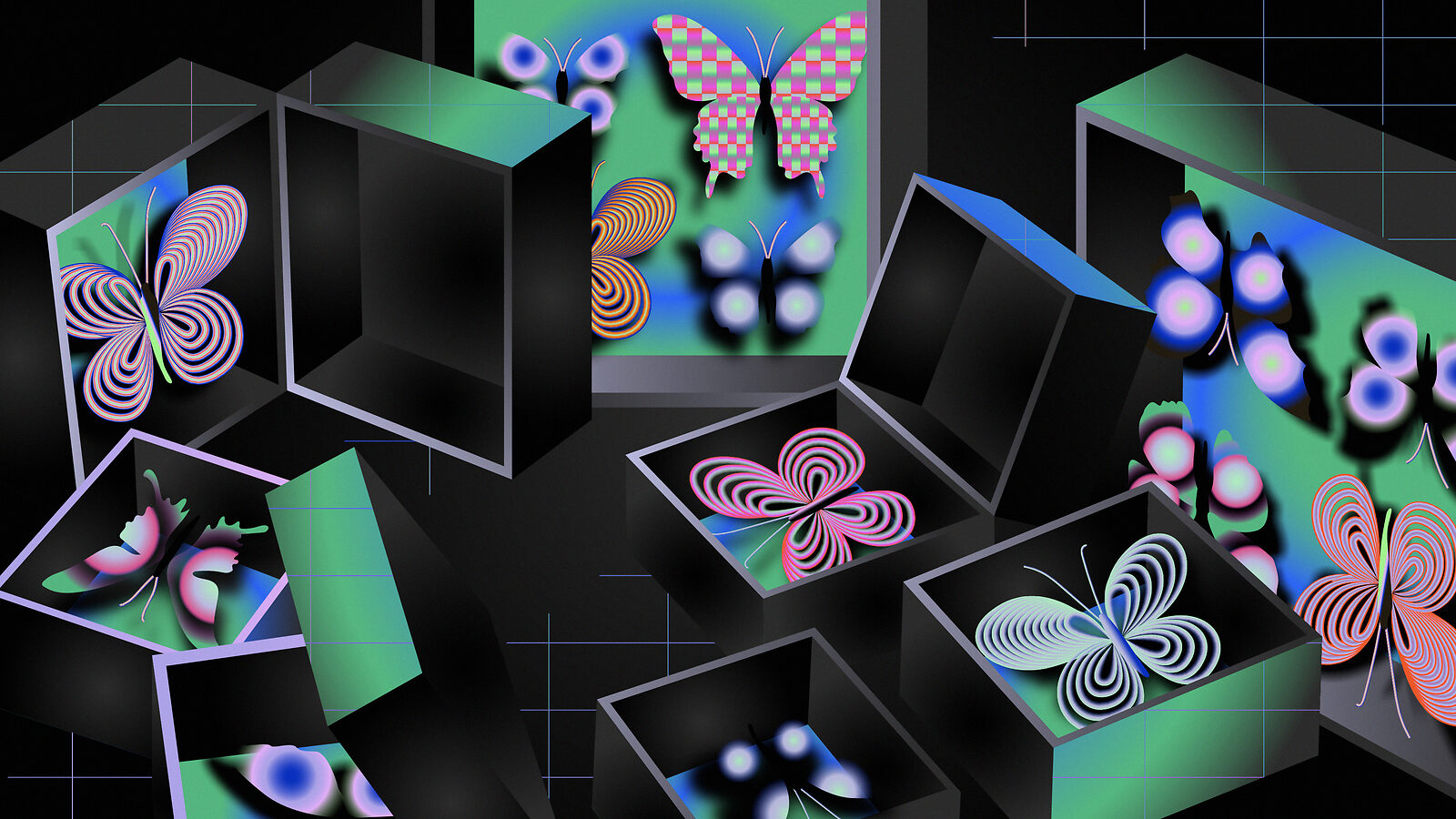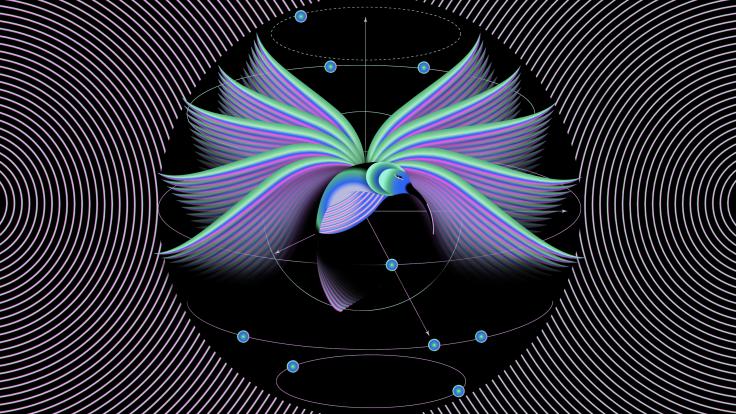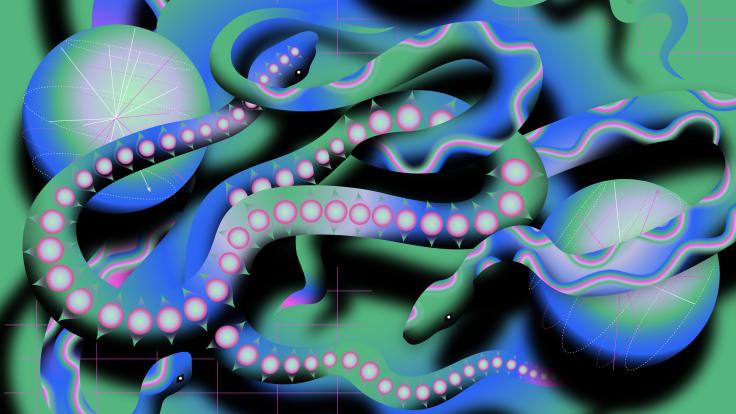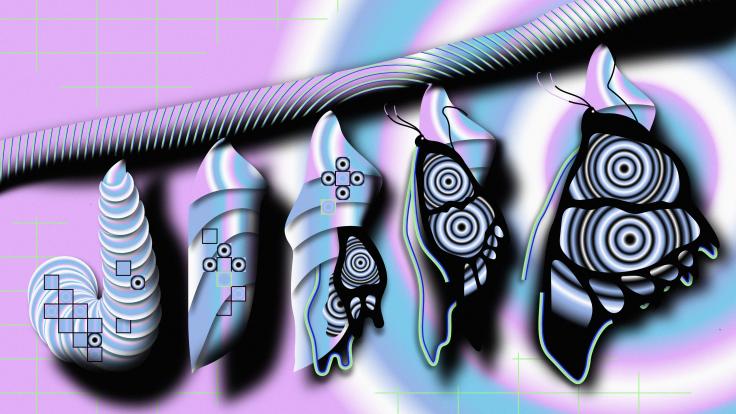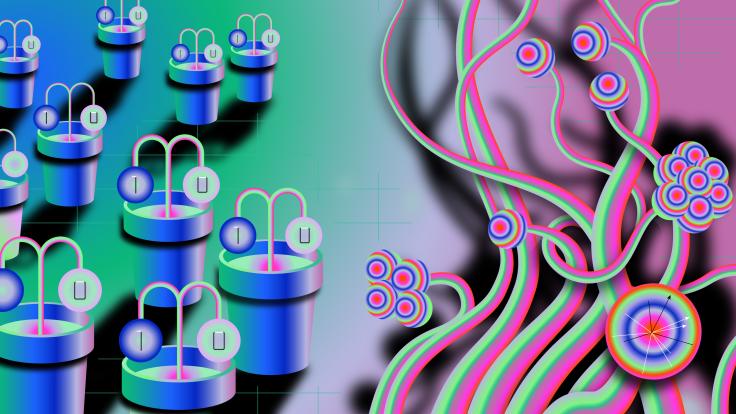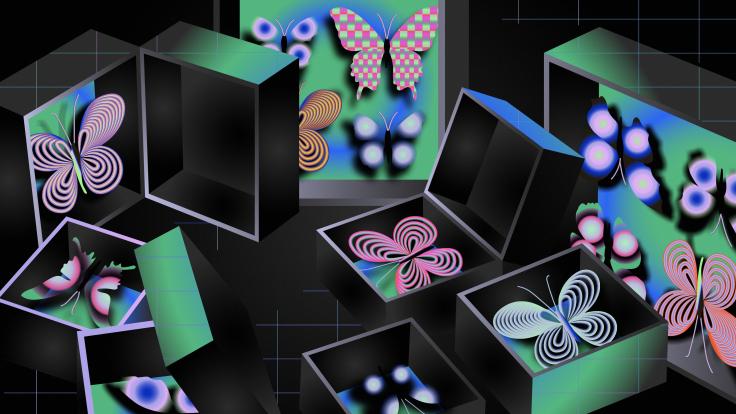The goal of building a quantum computer is to harness the quirks of quantum physics to solve certain problems far faster than a traditional computer can. And at the heart of a quantum computer is the quantum bit, or qubit—the quantum equivalent of the 1s and 0s that underlie our digital lives.
“A qubit is the fundamental building block of quantum information science technology,” says Joseph Heremans, an electrical engineer at the US Department of Energy’s Argonne National Laboratory.
Traditional bits can be any sort of switch, anything that can flip from 0 to 1. But building a qubit takes something more.
“A qubit is essentially a quantum state of matter,” Heremans says. “And it has weird properties that allow you to store more information and process more information” than a traditional bit.
Fortunately, nature has provided lots of options, and engineers have cooked up a couple more.
Those weird properties include superposition (the ability to be in a mixed state, a weighted combination of 1 and 0) and entanglement (in which multiple qubits share a common quantum state). Both might seem like they’d be hard to come by. Fortunately, nature has provided lots of options, and engineers have cooked up a couple more.
Researchers are exploring more than half a dozen ways to implement qubits, with two promising approaches currently in focus: superconducting circuits and trapped ions.
Out in front
Ions—atoms that have lost one or more of their electrons—emerged as a promising qubit platform at the dawn of experimental quantum computing in the mid-1990s. In fact, the first qubit ever built was fashioned out of a single beryllium ion.
Ions are natural quantum objects: Two of the discrete energy levels of their remaining electrons can represent a 0 or 1; those energy levels are readily manipulated by lasers; and because ions are electrically charged, they are easily held in place by electromagnetic fields. Not much new needed to be invented to produce trapped-ion qubits. Existing technology could handle it.
Another upside of trapped ions is that they are stalwart defenders against a qubit’s greatest nemesis: loss of information. Quantum states are fragile, and superpositions stick around only if the qubits don’t interact with anything. A stray atom or an unexpected photon can collapse the quantum state. In physics speak, the qubit “decoheres.” And decoherence is the death knell to any quantum information technology.
“We want a system where we can manipulate it, because we want to do calculations, but the environment doesn’t talk to it too much,” says Kenneth Brown, an electrical engineer at Duke University.
Trapped ions check both boxes. Held safely in a darkened vacuum, they have a low interaction with the environment, he says.
Because of that robustness, trapped ions exhibit some of the lowest error rates of any qubit technology. But they struggle to grow beyond small-scale demos. Adding more ions to the mix makes it harder for the lasers that control them to single out which one of them to talk to. And scaling up to more qubits means getting lots of auxiliary tech, such as vacuum systems, lasers and electromagnetic traps, to play along.
The largest trapped-ion quantum computer on the market is a 32-qubit machine built by IonQ, headquartered in College Park, Maryland. But quantum engineers want machines with hundreds, if not thousands, of qubits.
Enter the superconducting qubit
Just a few years after the first trapped-ion qubit, researchers produced the first qubit implemented in a superconducting circuit, in which an electric current oscillates back and forth around a microscopic circuit etched onto a chip.
When cooled to temperatures just a few hundredths of a degree above absolute zero, the oscillator circuit can behave as a quantum object: A flash of radio waves tuned to just the right frequency can put the circuit into one of two distinct energy levels, corresponding to a quantum 1 or 0. Follow-up zaps can steer it into a superposition of those two states.
“They’re a really promising route to make quantum computers” because they can be made on microchips, says Paul Welander, a physicist at SLAC National Accelerator Laboratory. “And microfabrication is something that we’ve been doing in the semiconductor industry for a long time.”
Taking advantage of techniques used to make computer chips, a manufacturer can fabricate superconducting circuits on large wafers.
Another advantage of the superconducting circuit is “the ability to make a device that’s hundreds of micrometers across and yet, it behaves like an atom,” Welander says.
Engineers get all the quantumness of an atom but with the ability to design and customize its properties by tuning circuit parameters.
These circuits are also extremely fast, cranking through each step in a computation in mere nanoseconds. And because they are circuits, they can be designed to suit the needs of engineers.
Superconducting qubits have found a home in the largest general-purpose quantum computers in operation. The biggest, unveiled in November 2021 by IBM, contains 127 qubits. That chip is a step toward the company’s goal of creating a 433-qubit processor in 2022, followed by a 1,121-qubit machine by 2023.
But superconducting circuits struggle against decoherence as well.
“They are made of many, many atoms,” Welander says.
That provides ample opportunity for something to go wrong—materials and fabrication processes present a particularly thorny challenge when attempting to mass-produce millions of qubits at a time.
Material interfaces are especially problematic. Metal electrodes, for example, readily oxidize. “Now we have an uncontrolled state at the surface,” Welander says, which can lead to decoherence of the quantum state and loss of information.
Another drawback is that superconducting circuits must stay frigid, hovering at temperatures just above absolute zero. That requires extreme refrigeration, which presents challenges for scaling superconducting quantum computers to thousands or millions of qubits.
A menu of options
While these two qubit technologies are perhaps the best known, they are not the only game in town.
Another approach employs flaws in diamonds. These gemstones are made up of carbon atoms arranged in a rigid, repeating latticework. But sometimes, another type of atom gets in. For example, a nitrogen atom or a vacancy—the absence of an atom—can take the place of a carbon atom. Such nitrogen and vacancy impurities are “a bit a like a trapped molecule in the diamond crystal,” Heremans says.
Here, electrons trapped in the crystaline flaw store information in a quantum property called spin, a type of intrinsic rotational momentum. When measured, the spin takes on only one of two options—perfect for encoding a 1 or 0. Those options can be toggled with laser light, radio waves or even mechanical strain.
Researchers are also exploring making qubits out of electrically neutral atoms, trapped using lasers instead of electromagnetic fields. “Neutral atoms are the most natural qubit candidate,” says Mikhail Lukin, a physicist at Harvard University.
Like ions, neutral atoms can be isolated from the environment and stay coherent for long stretches of time. But modern laser technology gives scientists more flexibility with neutral atoms than electromagnetic traps do with trapped ions. Neutral atoms can be organized into many different 2D patterns, providing more ways to connect the atoms and entangle them, leading to more efficient algorithms.
Using neutral atoms, Lukin and colleagues recently unveiled a 256-qubit special-purpose quantum computer known as a quantum simulator, the largest of its kind, with plans to build a 1,000-qubit simulator in the next two years.
The list of possible qubits goes on. Photons, semiconductors, molecules—these and other platforms have potential.
But despite all these options, there’s no clear winner. It’s not yet obvious what can be scaled up to 1,000 qubits or beyond. It’s not even certain that there is just one best approach.
“We’re still in hunting-and-finding mode,” Welander says. For quantum computing, “it may actually end up being something hybrid,” using multiple quantum materials and systems.
Perhaps a single processor will employ superconducting qubits working alongside diamond-defect qubits, which might talk to other quantum processors using photon-based qubits.
In the end, what makes the “best” qubit depends on how the qubit is being used: A good qubit for quantum computing might be different from a good qubit for quantum sensing or a good qubit for quantum communication, Heremans says.
Beyond physics
What is clear is that qubit progress isn’t just a physics problem. “It really requires expertise in a wide range of fields,” from materials science to chemical and electrical engineering, Welander says.
And it’s not just the qubits themselves that need attention. Qubits require a lot of support technology—vacuum systems, cryogenics, lasers, microwave components, nests of cables—all working in sync to get the most out of any quantum processor.
In many ways, quantum computers are where digital computers were in the 1950s and ’60s. Then too, researchers were searching for the right technology to represent 1s and 0s and perform the logic operations necessary for any calculation. Bulky vacuum tubes gave way to more compact transistors; germanium transistors yielded to better-performing ones made of silicon; integrated circuits let engineers cram many transistors and support electronics onto single wafers of silicon.
For quantum computing to reach its full potential, qubits still need the right technology. “There’s a lot of areas where people who are interested and people who are intrigued can plug in and make an impact,” Welander says.



